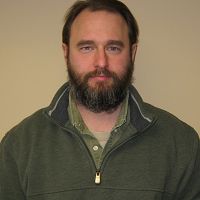Papanicolaou, 2015
From soilscapes to landscapes: A landscape-oriented approach to simulate soil organic carbon dynamics in intensively managed landscapes
Papanicolaou, A.N., K.M. Wacha, B.K. Abban, C.G. Wilson, J. Hatfield, C. Stanier, and T. Filley (2015)
Journal of Geophysical Research: Biogeosciences
-
IML, INVESTIGATOR
-
IML, GRAD STUDENT
-
IML, GRAD STUDENT
-
IML, INVESTIGATOR
-
IML, INVESTIGATOR
Plain English Summary
Tennessee Today: Did Dust Bowl’s ravages end in the 1940s? New study says no
EOS: Conservation Farming Shown to Protect Carbon in Soil
CZO News: Did Dust Bowl’s ravages end in the 1940s? New study says no
Abstract
Most available biogeochemical models focus within a soil profile and cannot adequately resolve contributions of the lighter size fractions of organic rich soils for enrichment ratio (ER) estimates, thereby causing unintended errors in soil organic carbon (SOC) storage predictions. These models set ER as constant, usually equal to unity. The goal of this study is to provide spatiotemporal predictions of SOC stocks at the hillslope scale that account for the selective entrainment and deposition of lighter size fractions. It is hypothesized herein that ER values may vary depending on hillslope location, Land Use/Land Cover (LULC) conditions, and magnitude of the hydrologic event. An ER module interlinked with two established models, CENTURY and Watershed Erosion Prediction Project, is developed that considers the effects of changing runoff coefficients, bare soil coverage, tillage depth, fertilization, and soil roughness on SOC redistribution and storage. In this study, a representative hillslope is partitioned into two control volumes (CVs): a net erosional upslope zone and a net depositional downslope zone. We first estimate ER values for both CVs I and II for different hydrologic and LULC conditions. Second, using the improved ER estimates for the two CVs, we evaluate the effects that management practices have on SOC redistribution during different crop rotations. Overall, LULC promoting less runoff generally yielded higher ER values, which ranged between 0.97 and 3.25. Eroded soils in the upland CV were up to 4% more enriched in SOC than eroded soils in the downslope CV due to larger interrill contributions, which were found to be of equal importance to rill contributions. The chronosequence in SOC storage for the erosional zone revealed that conservation tillage and enhanced crop yields begun in the 1980s reversed the downward trend in SOC losses, causing nearly 26% of the lost SOC to be regained.
Citation
Papanicolaou, A.N., K.M. Wacha, B.K. Abban, C.G. Wilson, J. Hatfield, C. Stanier, and T. Filley (2015): From soilscapes to landscapes: A landscape-oriented approach to simulate soil organic carbon dynamics in intensively managed landscapes. Journal of Geophysical Research: Biogeosciences. DOI: 10.1002/2015JG003078
 This Paper/Book acknowledges NSF CZO grant support.
This Paper/Book acknowledges NSF CZO grant support.
Explore Further





